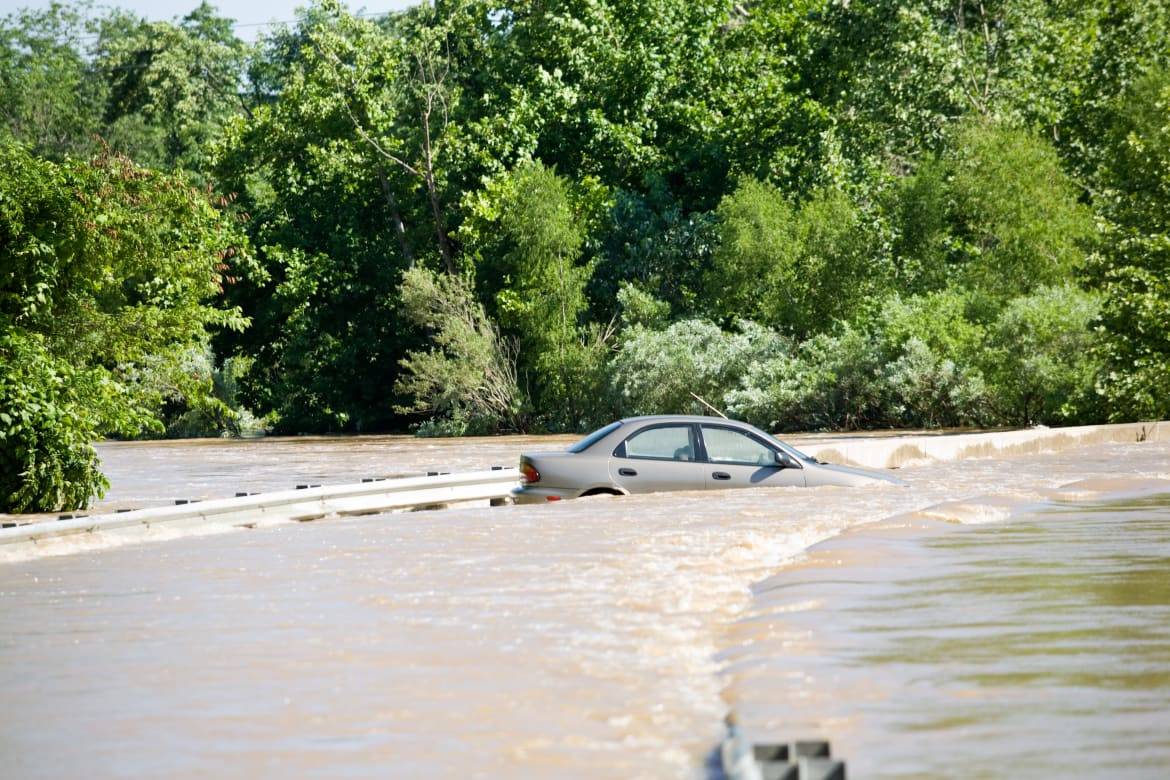This Hurricane Season, Learn to Spot a Flood-Damaged Car


The safety risks are far from over once a hurricane makes landfall and moves out of the area. Along with death and injury, they often leave in their wake unimaginable property destruction. When it comes to vehicles, many will be beyond repair, though they may look intact.
Related: You’re Trapped in Your Car in Rising Floodwaters: Here’s What to Do
The National Insurance Crime Bureau warned today that potential fraudsters can use this time to prey on innocent used-car buyers by selling cars that have been impacted by flooding. With Hurricane Ida leaving heavy damage to parts of the Gulf Coast and Northeast, a lot of these vehicles could hit the market in the weeks to come.
The agency defines a “flood vehicle” as one that’s been “completely or partially submerged in water to the extent that its body, engine, transmission or other mechanical component parts have been damaged.” While it may look cleaned up on the outside, dangerous hidden problems could lurk inside.
How do you prevent getting scammed? The NICB recommends visiting its VINCheck page; use the agency’s free tool to access all the vehicle identification numbers of damaged vehicles resulting from claims data provided electronically by NICB member insurance companies.
Related Video:
Aside from using the NICB’s VIN check tool, here are some other ways you can do your homework before you buy a used car:
- Inspect the vehicle for water stains, mildew, sand or silt under the carpet, floormats, headliner and dashboard. If it looks — or smells — questionable, it probably is. Also, a heavy aroma of cleaners and disinfectants is a sign that someone’s trying to mask a mold or odor problem.
- Look for fogging inside the headlights and taillights.
- Examine the upholstery and door panel for fading.
- Check for rust around screws in the center console and areas water doesn’t usually reach.
- Be on the lookout for mud, grit or rust corrosion in the spare-tire compartment and in small crevices under the hood.
- Investigate the seat belt retractor for signs of moisture, mildew or grime.
- Test the stereo speakers; door-mounted speakers will often be damaged in a flood.
- Pay special attention to the wheels; aluminum alloys may be coated in a white powder and show signs of pitting or dimples.
- Have an independent mechanic inspect the vehicle prior to purchase; make sure to have the mechanic inspect the car’s mechanical and electrical components, as well as systems that contain fluids, for water contamination.
Finally, trust your instincts. Sometimes a deal is too good to be true.
More From Cars.com:
- You’re Trapped in Your Car in Rising Floodwaters: Here’s What to Do
- Criminals Don’t Take a Holiday: The 11 Biggest Holidays for Auto Theft
- More Safety News
- Find Your Next Car
Cars.com’s Editorial department is your source for automotive news and reviews. In line with Cars.com’s long-standing ethics policy, editors and reviewers don’t accept gifts or free trips from automakers. The Editorial department is independent of Cars.com’s advertising, sales and sponsored content departments.

News Editor Jennifer Geiger joined the automotive industry in 2003, much to the delight of her Corvette-obsessed dad. Jennifer is an expert reviewer, certified car-seat technician and mom of three. She wears a lot of hats — many of them while driving a minivan.
Featured stories



